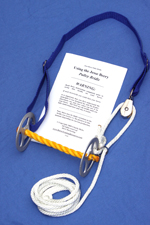Every horseback rider wants their horses to be responsive to their commands and ques. But what many green and intermediate riders fail to recognize is that the rider needs to be responsive to the horse as well.
We, as riders, need to be responsive to the horse’s response….that sounds funny but ’tis true.
One of the key principles in horse training and riding is pressure-release. A horse will almost always move away from pressure. But sensing when the horse is reacting to the pressure is the responsibility of the rider. In the early stages of training you must learn to sense when the horse is giving or reacting to the pressure – we call it “a try”.
What follows is an excellent article written by Prof. Clint Depew of the LSU AgCenter about this very issue.
Also – if you didn’t take advantage of the free “Basic Horse Training” booklet we are distributing then you can get it here:
Click HERE for the Basic Horse Training Booklet
Here’s the article now:
One of the most critical concepts in developing a responsive horse is to respond to its responses. To respond to the horse, you must feel his response and understand it.
If the horse gives you the slightest response either away from pressure on the bit or your legs, you must remove the cue immediately for the horse to understand he responded correctly. You can practice learning to respond to your horse by getting a partner and a large rubber band. You and your partner should stretch the rubber band and one of you close your eyes. When your partner moves the rubber band forward or releases pressure on the rubber band, you move your hand forward to respond to the change in pressure.
You can add more incentive and excitement to this exercise by allowing the partner to pop you with the rubber band if you do not release the pressure immediately when he releases pressure. In this way you are learning to respond to your partner to avoid getting popped. As you become proficient at this exercise, you will be able to detect the small responses of your horse better. Practice on your horse by pulling on the reins until you have just a slight pressure on his mouth. As soon as the horse makes the slightest movement back or drops his nose, release the pressure on the reins. By doing this simple exercise, you will have the horse able to respond immediately when you pick up the reins.
The same exercise can be done with the leg cues. Push one leg against the horse’s side lightly and, as soon as the horse starts to move away from the cue, immediately move your legs. As you become more proficient at detecting these small responses in a horse, your horse will become more responsive and more fun to ride.


